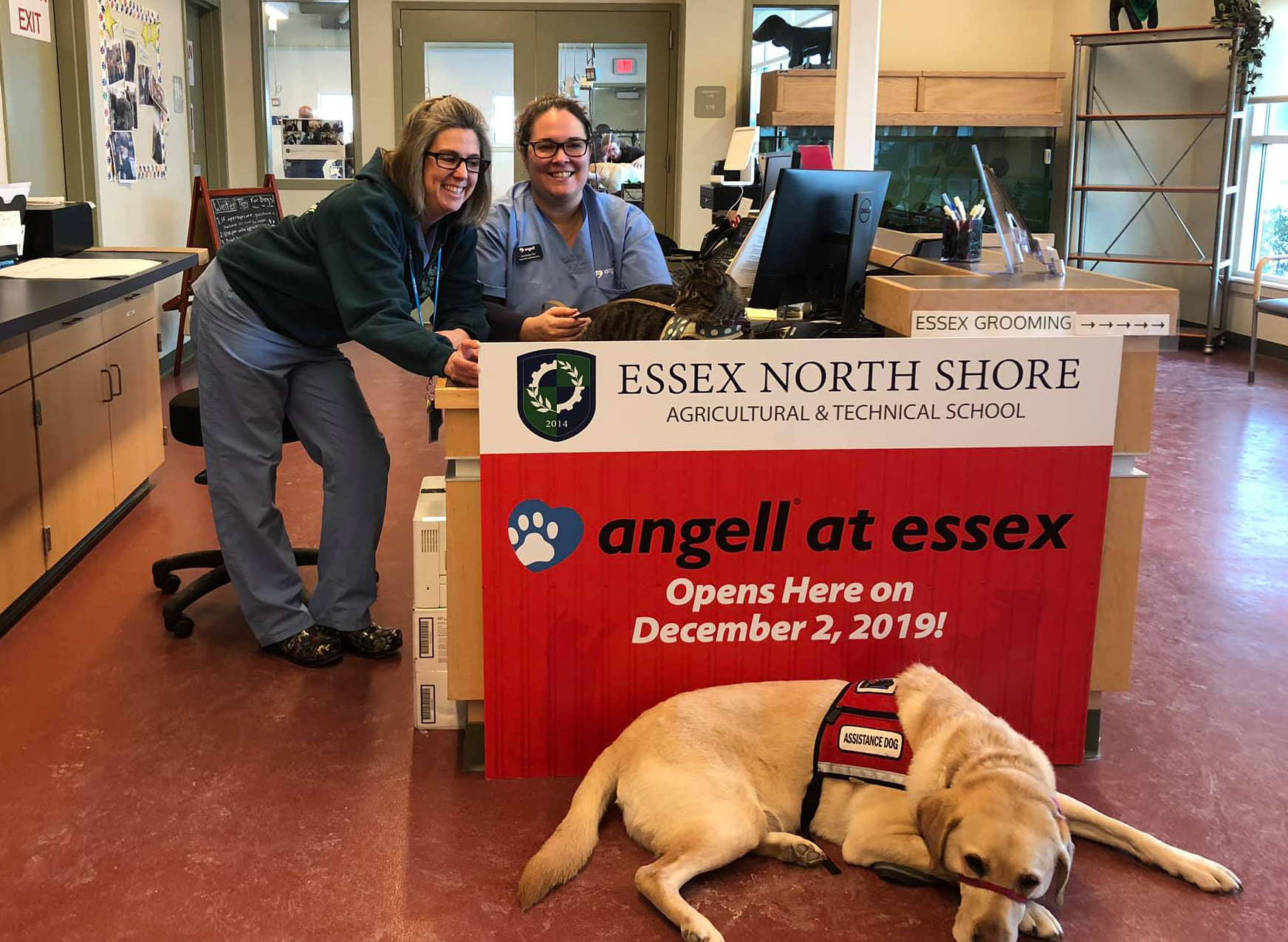 Angell at Essex opened its doors to the public this month! Offering primary care, surgery, and dentistry under the oversight of Dr. Erin Turowski, a significant portion of the clinic’s services is offered to low-income pet owners. Angell at Essex also serves as a rigorous academic training program for students enrolled in the Veterinary Science program at Essex North Shore Agricultural and Technical School. Check out photos on Facebook or visit angell.org/essex.
Angell at Essex opened its doors to the public this month! Offering primary care, surgery, and dentistry under the oversight of Dr. Erin Turowski, a significant portion of the clinic’s services is offered to low-income pet owners. Angell at Essex also serves as a rigorous academic training program for students enrolled in the Veterinary Science program at Essex North Shore Agricultural and Technical School. Check out photos on Facebook or visit angell.org/essex.
>> More
In-Clinic and At-Home Basic Physical Rehabilitation to Improve Recovery after Cranial Cruciate Ligament Repair
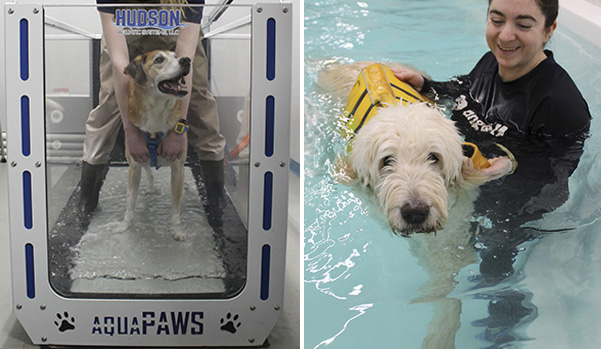
Cranial cruciate ligament disease is the most common canine orthopedic injury. The gold standard of care is surgery on the stifle, including extracapsular repair, tibial tuberosity advancement (TTA), or tibial plateau leveling osteotomy (TPLO). What can we do in-clinic and recommend at home for a safe and successful rehabilitation of these post-surgical dogs? Angell's Jennifer Palmer, DVM, CCRT provides answers.
>> More
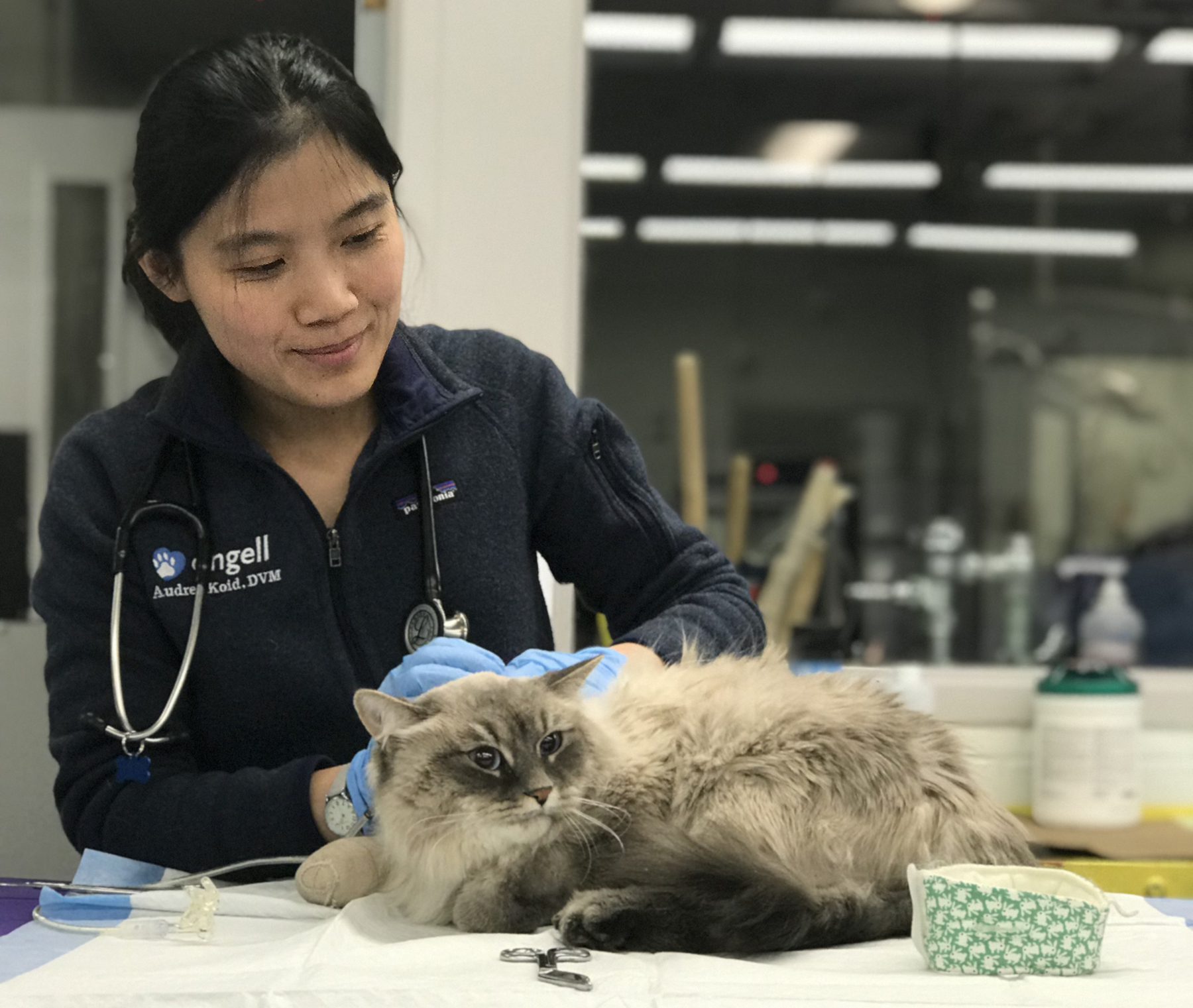 Feline Hyperaldosteronism - How to Spot it and Treat it
Feline Hyperaldosteronism - How to Spot it and Treat it
Feline hyperaldosteronism is likely the most common adrenocortical disease affecting cats. Profound hypokalemia (<3.0mEq/L) is often the first abnormality identified that triggers a suspicion of hyperaldosteronism. Kiko Bracker, DVM, DACVECC reviews the clinical signs and treatment of this disease.
>> More
Understanding Degenerative Myelopathy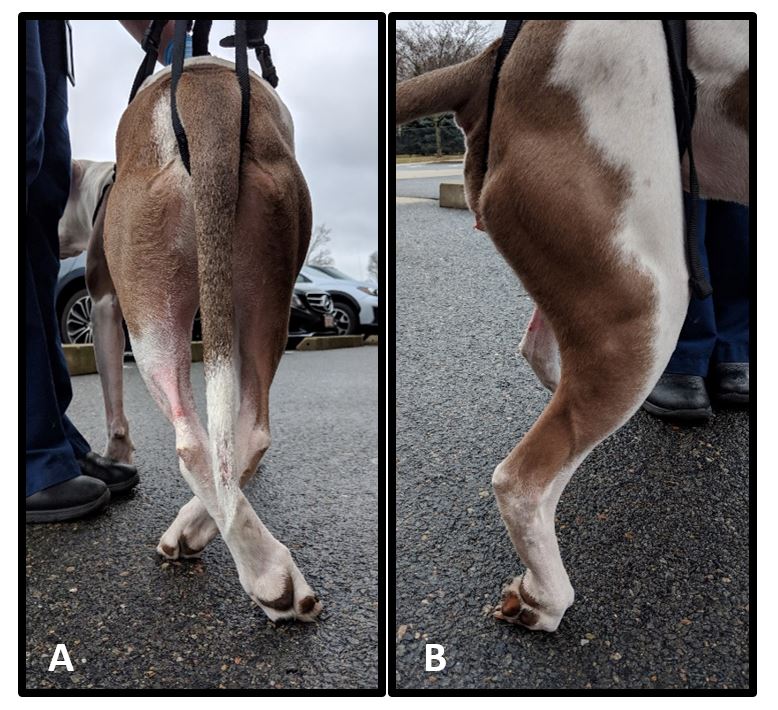
Degenerative myelopathy (DM) is a slowly progressive, degenerative disease affecting the spinal cord in older dogs. Over time, the severity of the paraparesis and pelvic limb ataxia will progress such that the affected dog will become non-ambulatory and then paraplegic. Jennifer Michaels, DVM, DACVIM (Neurology) explains the signalment, differential diagnoses, genetics and prognosis.
>> More
 Upper Respiratory Aspergillosis in Cats
Upper Respiratory Aspergillosis in Cats
The respiratory tract is the most common body system involved in Aspergillus infections in both humans and animals since inhalation of Aspergillus spores is the primary route of contracting this disease. Kirstin Johnson, DVM, DACVIM shares information about treatment protocols that have been reported to be successful in cases of sino-orbital aspergillosis (SOA) in cats.
>> More
 Stereotactic Radiation for Canine Nasal Tumors
Stereotactic Radiation for Canine Nasal Tumors
Stereotactic radiation therapy (SRT) is a form of extremely high-dose per fraction radiation classically delivered over 1-5 treatments. With SRT's precise targeting, just a few treatments can shrink tumors while sparing adjacent critical structures such as the eye, brain and skin. Lyndsay Kubicek, DVM DACVR (Radiation Oncology) shares information about the use of SRT in canine nasal tumors. SRT offers a more convenient delivery and anesthesia schedule with improved acute side effects and similar to slightly higher risks of late term side effects.
>> More
 I-Loc for Minimally Invasive Nail Osteosynthesis (MINO)
I-Loc for Minimally Invasive Nail Osteosynthesis (MINO)
By decreasing surgical interference of the soft tissues and blood supply at a fracture site, fracture healing times can be reduced. After decades of experience repairing human fractures, the use of minimally invasive nail osteosynthesis (MINO) can provide a meaningful alternative to popular plate and screw options to repair long bone fractures. Nick Trout, MA, VET MB, DACVS, ECVS explains how I-Loc works and which patients are good candidates.
>> More
Registration is Open for Angell Spring 2020 CE for Vets and Techs
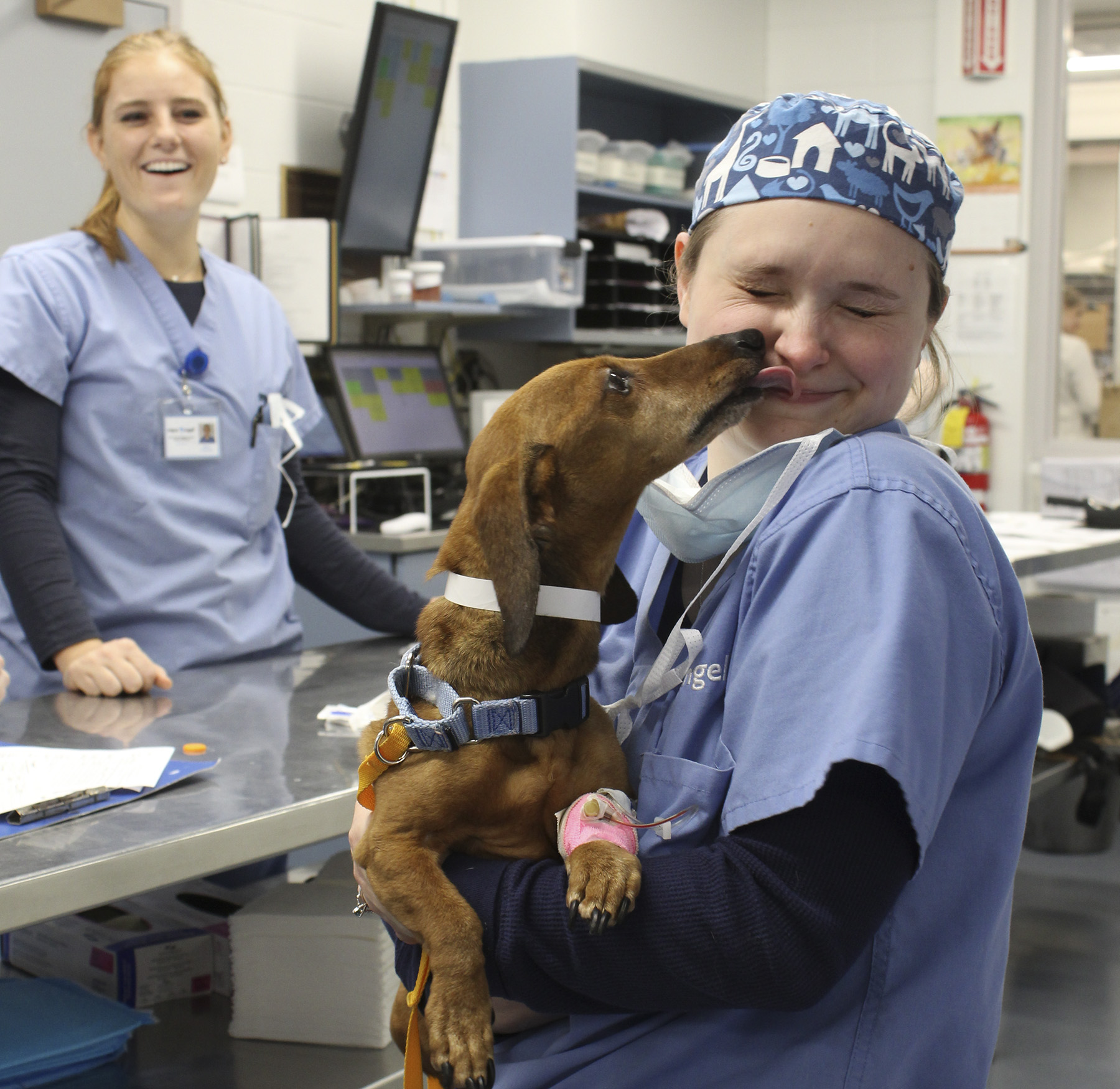 Sunday, March 15, 2020
Sunday, March 15, 2020
8:00am – 2:45pm
Newton Marriott
5 CE Credits (pending RACE approval)
Register here. Visit angell.org/CE for details.
Practical Tips and Techniques for Emergency Triage and Care
-
Tips for Fluid Therapy: When to Use Which Types of Fluids and Why – by Courtney Peck, DVM, DACVECC
-
Diagnosing and Stabilizing the Cat in Respiratory Distress: Tips and Tricks – Jinni Sinnott-Stutzman, DVM, DACVECC
-
Triage for Brachycephalic Dogs – Meghan Whelan, DVM, DACVECC
-
Stay & Play or Scoop & Go? – Alison Allukian, DVM

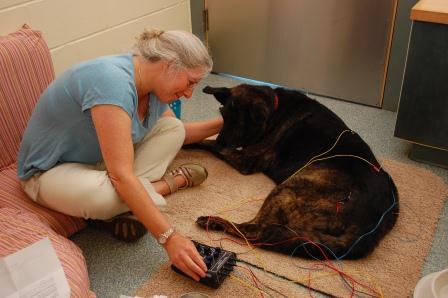


 Feline Hyperaldosteronism - How to Spot it and Treat it
Feline Hyperaldosteronism - How to Spot it and Treat it
 Upper Respiratory Aspergillosis in Cats
Upper Respiratory Aspergillosis in Cats Stereotactic Radiation for Canine Nasal Tumors
Stereotactic Radiation for Canine Nasal Tumors I-Loc for Minimally Invasive Nail Osteosynthesis (MINO)
I-Loc for Minimally Invasive Nail Osteosynthesis (MINO) Sunday, March 15, 2020
Sunday, March 15, 2020
